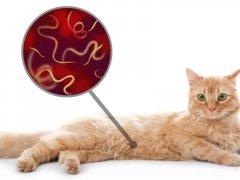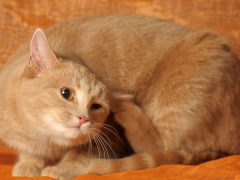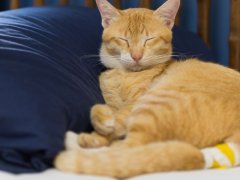
Kate Barrington / Cats.com
Constipation in cats is not something to take lightly—it can be a serious health concern.
Constipation occurs when cats pass hard, dry stool or have difficulty evacuating their stool. Obstipation is a severe form of constipation in which no stool passes for a period of days, resulting in a large buildup of feces in the colon.
Although many cats will occasionally become constipated, prolonged constipation requires veterinary intervention.
Constipation is very common in older cats and senior cats, but cats of any age can experience constipation.
Is Your Cat Constipated? A Vet Explains How To Help
What Causes Constipation in Cats?
Cat constipation signs can sometimes be difficult to notice. There are many possible causes of constipation in cats.
Some of the most common causes of constipation in cats are:
- Anal gland infection
- Arthritis
- Cancer
- Change in diet or inappropriate diet
- Dehydration
- Diabetes
- Foreign body ingestion
- Hairballs
- Hyperthyroidism
- Inflammatory bowel disease
- Intestinal tumors
- Kidney disease
- Medication
- Megacolon
- Metabolic abnormalities
- Neurologic disease
- Obesity
- Prior pelvic fractures
Constipation can also result if a cat begins holding her poop because of behavioral or environmental reasons. For instance, the cat may be avoiding the litter box because she is being ambushed by another household cat when she enters or exits. Maybe the litter box itself is not cleaned frequently enough and the cat doesn’t want to use it.
Megacolon may also play a part in feline constipation. A condition called megacolon can either be the primary cause of constipation or can develop as a secondary condition because of severe constipation. With megacolon, the muscles of the colon become stretched out and weak and are unable to move fecal matter through the colon and out of the body.
Megacolon is a very serious condition that can result in severe illness and even death if left untreated. Therefore, it is vital to seek veterinary attention if your cat experiences constipation that does not resolve quickly.
Signs & Symptoms of Cat Constipation
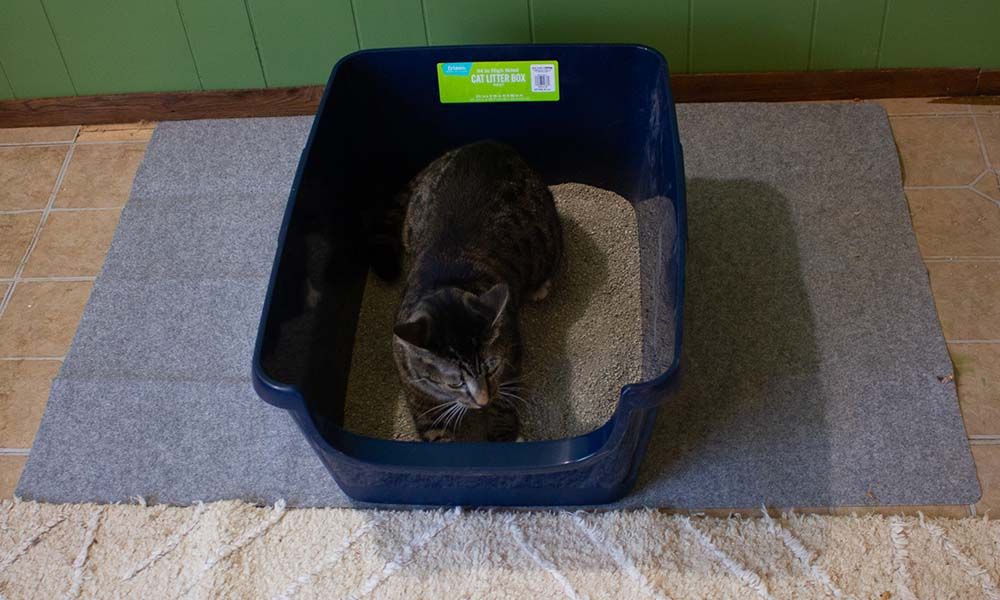
Shannon Perry / Cats.com
Some of the most obvious signs of constipation are less frequent defecation (finding less poop in the litterbox), finding small or dry poops, or in severe cases, finding no poop at all. In general, cats defecate one to three times a day. Constipation should be suspected in any cat that has not pooped in a couple of days.
Other signs of constipation include:
- Abdominal discomfort
- Blood or mucus in the stool
- Decreased appetite
- Dry, hard stool
- Defecating outside the litterbox
- Hiding
- Small amounts of diarrhea
- Straining when using the litter box
- Vocalizing (crying) when using the litter box
- Vomiting
How To Help a Constipated Cat?

Prolonged constipation may result in severe fecal impaction as shown in this X-ray. Bartley Harrison / Cats.com
If your cat is severely constipated (passing very little stool, has not pooped in several days), she requires veterinary care.
Colonic obstruction (where the colon becomes impacted with stool) can be mild (termed constipation) or it can be very serious (called obstipation). When feces remains in the cat’s body for too long, the cat will eventually become extremely sick. Left untreated, cats can even die from constipation.
When You Visit the Clinic, Your Veterinarian Will Perform a Physical Examination
The veterinarian will do a complete physical exam, including palpating the abdomen to feel for hard stool in the colon and checking for signs of dehydration (one of the most common causes of constipation). Some cats will even tolerate a rectal examination, though some cats will not think this is acceptable!
Additional Tests May Be Necessary
Depending on the severity of the constipation and whether it is something that has happened before, the veterinarian might wish to run additional tests, including blood work, urinalysis, and X-rays or ultrasound.
Fluid Therapy Is a Cornerstone of Constipation Treatment
The main treatment for your cat’s constipation is therapeutic rehydration with fluid therapy. Your veterinarian may choose to rehydrate your cat with subcutaneous fluids (administered under the skin) or intravenous fluids (given via an intravenous catheter).
Enemas and Laxatives May Be Administered
After hydration, laxatives may be prescribed to help the cat begin to pass the stool. Enemas can be used to directly hydrate and lubricate the stool that is stuck in the colon. Over-the-counter enemas available in pharmacies should not be used in cats, since many contain ingredients that are toxic to cats. Many cats will tolerate enemas with minimal sedation, but a full disimpaction (manual extraction of feces) will require general anesthesia and is pursued only when other methods have failed.
Some cats with severe megacolon may require a surgery called a subtotal colectomy to remove the affected area of the colon to prevent painful recurrences. This is a major procedure that is reserved for only the most severe cases.
Once the constipation is addressed, your veterinarian will discuss measures you can take at home to prevent your cat from becoming constipated again, including encouraging more water intake, dietary changes, supplements, and possibly medications like stool softeners, laxatives or motility drugs (always use such medications under the guidance of a veterinarian).
Constipated Cat Remedies / Natural Remedies
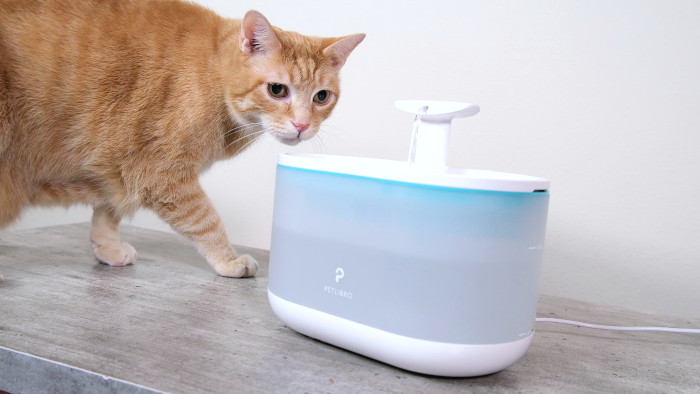
Mallory Crusta / Cats.com
Making some changes to your cat’s lifestyle can greatly reduce her chances of becoming constipated again. To keep things moving, you will want to keep your cat well-hydrated, make sure she’s eating enough fiber, prevent hairballs, keep your cat at a good weight, and encourage exercise.
1. Increase Hydration
Hydration is the biggest component of resolving and preventing constipation in cats. To resolve mild constipation or to prevent constipation from recurring, encourage your cat to drink more water. Cats are notoriously bad about drinking water, but there are some tricks you can try to get your cat to drink more.
Many cats like drinking from pet fountains because the water is always moving—keeping it interesting, cool, and fresh tasting. Many cats prefer cool water, so you can also try putting a few ice cubes in your cat’s water dish or purchase a cooling pet bowl designed to keep the water cold. Another good way to entice your cat to drink more is to flavor her water by pouring a teaspoon of low-sodium chicken broth or juice from a can of tuna into her water dish.
If your cat eats primarily dry food, gradually switching your cat’s food to canned food can increase her daily water consumption. Read more about the best cat food for constipation below.
2. Try Natural Remedies
Certain home remedies, including fiber supplements like psyllium (Metamucil) or canned pumpkin, can help keep things moving in your cat’s intestinal tract. These natural remedies for cat constipation are safe and easy to give your cat.
Not all cats need fiber, though, in some cases, excess fiber can cause more harm than good. Ask your veterinarian if your cat would benefit from psyllium or pumpkin and for advice on how much to give. In some cases, your veterinarian may recommend a gentle laxative like Miralax.
Although some people think it’s a good idea to give a cat with constipation olive oil, coconut oil or even butter to relieve cat constipation, this is generally not recommended. The high-fat content of oils and butter can upset your cat’s stomach or even cause a dangerous medical condition called pancreatitis, especially when given in high amounts.
3. Prevent Hairballs
If your cat is prone to hairballs, consider using a hairball remedy. Hairball remedies come in a tasty gel formulation that cats find palatable. There are also special hairball treats designed to help move hair through the digestive tract. Brushing your cat more frequently can also cut down on the amount of hair she ingests during self-grooming.
4. Maintain a Healthy Weight
Overweight cats are more prone to constipation. If your cat is overweight, speak to your veterinarian about steps you can take to help her safely lose weight so she is leaner.
5. Increase Exercise
The more your cat moves, the better her bowels will function. Encourage her to get more exercise by adding more play sessions with toys like feather wands and laser lights (careful not to shine them into her eyes).
Cat Food for Constipation
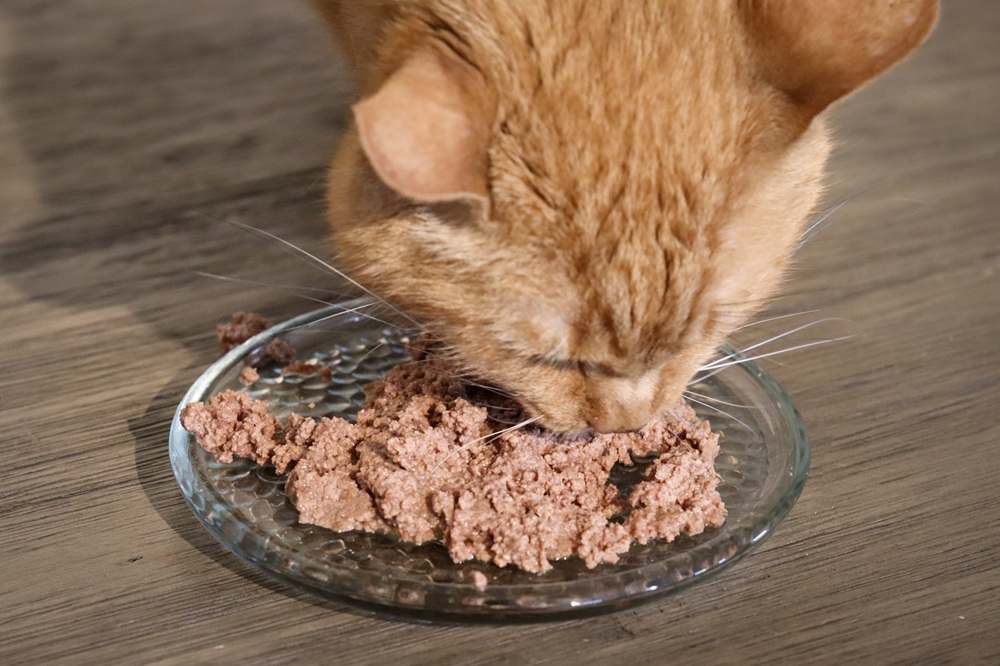
Kirsten McCarthy / Cats.com
Certain cat foods are designed to help promote colon health to keep things moving. A high-fiber diet or low-residue diet can help cats that experience chronic (recurring) constipation. Ask your veterinarian to recommend a specific brand of cat food for constipation.
Help for Cat Constipation
For some cats, constipation can be a recurring issue. If your cat experiences constipation, stay on top of her hydration and implement any other changes your veterinarian recommends to try to stave off future episodes.
